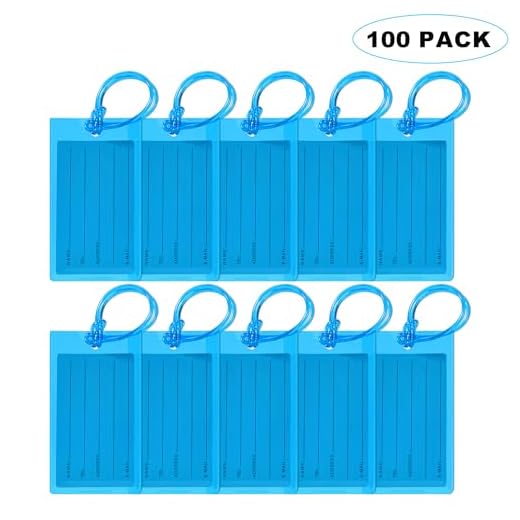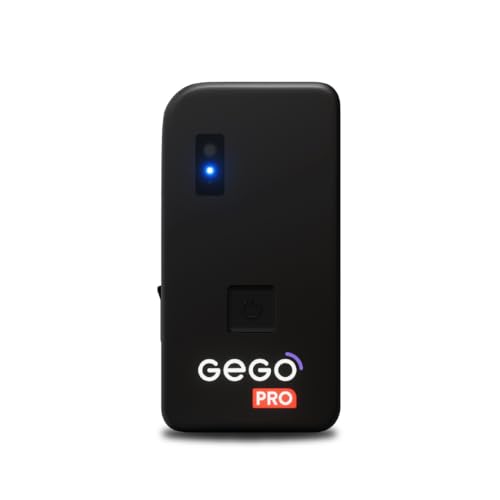



Ensure the identifier is properly affixed to your travel case using a sturdy attachment method. Loop it through the handle or adjust the strap tightly around the suitcase’s body to minimize the risk of detachment during transit.
Confirm that your personal details are clearly visible on the surface of the identifier. Use a permanent marker or durable label to write your contact information, including your name, email, and phone number, ensuring that it is legible and resistant to water damage.
Consider using a brightly colored identifier to enhance visibility. This simple adjustment can significantly reduce the chances of misplacing your belongings in crowded areas, especially at busy airports where many similar items are present.
Lastly, routinely inspect the fastening mechanism before each trip; replacing worn-out straps or ties can prevent unwanted surprises during travel. A little preparation goes a long way in safeguarding your possessions while you explore new destinations.
Adding Identification for Your Bags
Secure the identification piece to the handle or strap of your bag using a sturdy attachment mechanism. This ensures that it remains affixed during transit.
Utilize a durable material, such as leather or heavy-duty plastic, to withstand rough handling. Avoid lightweight options that may tear or break easily.
Include key details such as:
- Your full name
- Address with city and zip code
- Phone number
- Email for quick contact
Consider using bold lettering for visibility, especially against busy backgrounds. Additionally, personalize with a unique design or color scheme to make your belongings easily recognizable.
Use a water-resistant coating or laminate for protection against moisture and dirt, enhancing the longevity of your information.
Before traveling, double-check that the information is current and accurate, reducing the chance of confusion in case of misplacement.
Choosing the Right Luggage Tag Material
Select a material that withstands wear and tear. Options include plastic, metal, leather, and fabric. Each has unique benefits; for instance, plastic is water-resistant and lightweight, while metal offers durability and a modern look.
Consider leather for a classic aesthetic, though it may not resist moisture as effectively. Meanwhile, fabric can provide comfort and flexibility but might wear out faster.
Reflect on your travel style. Frequent flyers benefit from robust options like plastic or metal, while occasional travelers might prioritize cost-efficiency. Always choose a material that securely houses your identification without compromising visibility.
Finally, assess the environmental impact of your choice. Eco-friendly materials, such as recycled plastics, offer sustainability along with functionality.
Filling Out Your Luggage Tag Correctly
Begin with your full name, ensuring clarity and avoiding initials or nicknames. Use a permanent marker or printed label to prevent smudging. Include your address; only the city and state are necessary for domestic travel. For international trips, add your full address along with your country.
Next, provide a contact number. Opt for a mobile number to ensure easy reach. Avoid using work numbers, as they may not be accessible while traveling.
For added security, include an email address. This can be beneficial if your belongings are misplaced. Some travelers prefer to include a secondary contact number, such as a family member or friend, to ensure swift communication.
Consider protective measures against bed bugs by opting for best luggage to avoid bed bugs, as additional consideration for your travel gear. Properly filled-out identifiers can assist in returning lost items effectively.
If you travel with pets, think about how to keep them secure as well. Exploring tips on how to keep dog from digging under wood fence will ensure your furry friends are safe in your absence.
Lastly, don’t forget to secure this identifier firmly onto the baggage. Regular checks before departure help confirm that everything is intact and positioned correctly.
When enjoying outdoor activities, consider durable packing options like best quality outdoor folding chairs with umbrella to ensure convenience in various settings. Proper labeling here also enhances the ease of reunion with your gear after use.
Attaching the Luggage Tag Securely
Utilize a strong strap or holder specifically designed for baggage identification. Ensure the strap wraps around the handle or loop of the suitcase firmly, preventing any movement during transit.
Thread the end of the fastening through the designated slot on the identification piece and pull until secured. Verify that it cannot easily slip off by tugging gently on it.
If your identifier features a buckle, confirm it clicks into place. This mechanism ensures a tight hold, which minimizes the risk of loss.
For added security, consider using a secondary fastening method such as tying a knot with a sturdy string or thin cord. This extra step can provide peace of mind during travel.
Check the attachment before each journey, especially if handling or storage occurs. A quick visual inspection can save time and prevent potential mishaps.
Customizing Your Luggage Tag for Easy Identification
Select bright colors or unique patterns that stand out, making your belongings easily recognizable at baggage claims. Vivid neon colors or distinctive prints can make a significant difference amid a sea of similar looking items.
Incorporate personal characteristics such as initials or a favorite symbol into the design. This not only adds a personal touch but also enhances visibility and identification. Custom graphics or logos can further cement ownership.
Consider adding additional identifier information like a QR code or a small photo that corresponds to you. Scanning the code can reveal contact details or travel itinerary, offering extra security should your items go missing.
Use a durable, water-resistant material to ensure the design withstands wear and tear during transit. Materials like PVC, nylon, or silicone offer resilience and longevity.
| Feature | Recommendation |
|---|---|
| Color | Bright and contrasting colors |
| Personal Markings | Initials or symbols |
| Additional Identifiers | QR code or personal photo |
| Material | PVC, nylon, or silicone |
Adherence to these suggestions will facilitate easier identification and improve the likelihood of securing your possessions during travel.
Maintaining Your Luggage Tag for Longevity
Regularly inspect your identification label for any signs of wear, such as fraying or fading. Replace any damaged elements immediately to prevent loss of information. Consider storing the piece inside a protective sleeve, as this can shield it from moisture and physical impacts that occur during travel.
Cleaning Techniques
Utilize a damp cloth with mild soap for general cleaning. Avoid abrasive materials that could scratch the surface. For resilient synthetics, a dedicated cleaner may be applicable, ensuring that you follow the manufacturer’s recommendations.
Storage Tips
When not in use, keep your identifier in a cool, dry place. Avoid exposure to extreme temperatures or direct sunlight, as prolonged exposure can lead to degradation of materials. If possible, store inside a travel pouch along with other essential items, reducing the risk of loss.
FAQ:
What materials are best for a luggage tag?
When choosing a luggage tag, opt for materials that are durable and weather-resistant. Common choices include nylon, leather, and plastic. Nylon tags are lightweight and flexible, while leather offers a more classic look but might be heavier. Plastic tags can withstand quite a bit of wear and tear and are often waterproof, making them suitable for varied travel conditions. Selecting a sturdy material ensures that your luggage tag remains intact throughout your travels.
How can I ensure my luggage tag won’t get lost during travel?
To minimize the chances of your luggage tag getting lost, it’s advisable to securely attach the tag to your bag. Use a strong attachment method, such as a metal loop or a sturdy buckle that can’t easily break off. Additionally, using a tag with a unique design or bright color can make your luggage more identifiable. Insert your contact details accurately and consider including a secondary form of identification, like a business card, inside the tag’s sleeve to further assist in retrieval if it gets separated from your bag.
Can I make a DIY luggage tag? If so, how?
Yes, crafting a DIY luggage tag can be a fun and personalized project. Start by cutting a piece of sturdy material like cardboard, plastic, or leather into your desired shape. Next, punch a hole in one end and attach a loop of string or ribbon so you can affix it to your luggage. Decorate the tag with stickers, colors, or your travel symbols. Remember to write your name and contact information clearly. For added durability, you might consider laminating the tag to protect it from wear and tear.
What should I include on my luggage tag?
When filling out your luggage tag, include your full name, phone number, and email address to ensure you can be contacted if your bag is found. It’s also wise to avoid using your home address for safety reasons. Instead, you might want to use an alternate contact, like a family member or a friend. Additionally, consider adding a personal identifier, such as a distinctive logo or symbol, to make it easier to spot your luggage on the carousel.
Are there any specific regulations regarding luggage tags?
Generally, there are no strict regulations regarding luggage tags, but it’s important to ensure that they are not obstructive and do not hide the airline’s barcode or QR code printed on the luggage. Some airlines may have specific guidelines about the size and format of tags. Always check with your airline before traveling to be sure that your luggage tags comply with their requirements. Keeping your tag visible and legible can help with smooth identification during check-in and baggage retrieval.









